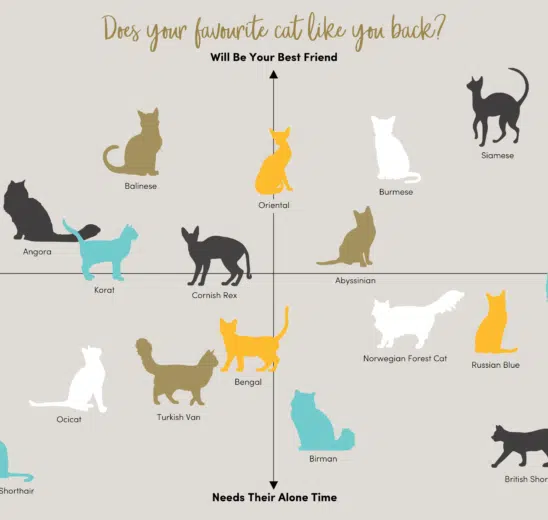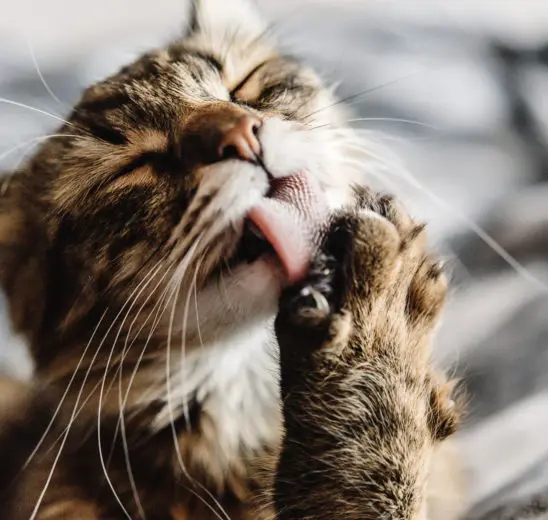Cats are naturally inquisitive creatures, but sometimes this can lead to problems. When curious cats nibble on plants they shouldn’t eat, they can get sick. Find out which plants are toxic to cats, to make your home and garden more cat friendly.
Why are some houseplants toxic to pets?
A lot of people don’t realise that there are certain plants toxic to cats. Sometimes an innocent vase of flowers can cause issues for cat owners, if their cat spontaneously decides they’d like to try a plant-based diet.
Plants that are toxic for cats contain irritants. Irritants cause inflammation, which can result in itchy eyes or skin. If your cat ingests something that contains an irritant, it can also cause inflammation of the internal organs, such as their heart or kidneys.
Not all plants are the same: some are only mildly irritating to cats, while others are highly toxic. The quantity that your cat consumes will also play a factor in the severity of their reaction.
What are the most common toxic house plants?
Here are some of the most common types of house plants toxic to cats:
Flowers
- Azalea (Rhododendron spp.) – These are bright, flowering shrubs in various shades of pink.
- Chrysanthemum (Chrusanthemum spp.) – Also called ‘Mum’, ‘Chrysanth’ or ‘Daisy’. Features large flowers in a wide variety of shades.
- Daffoldil (Narcissus spp.) – These flowers feature broad, funnel-like petals, and are usually coloured in shades of yellow and white.
- Lily (Lilium spp.) – There are around 110 species in the lily family. They have an elegant appearance, with large petals that curl at their edges.
- Tulip (Tulipa spp.) – Their oval-shaped petals are usually large and brightly coloured.
Other plants
- Devil’s Ivy (Epipremnum aureum)– Also called ‘Pothos’, this plant has pointed green leaves with splashes of white.
- English Ivy (Hedera helix)– Also known as ‘Common Ivy’, ‘European Ivy’, or simply ‘Ivy’, this plant features star-shaped dark green leaves.
- Marijuana (Cannabis Sativa) – Not only is it illegal to grow this plant in most states of Australia, it’s also bad for your cat.
- Spanish Thyme (Coleus ampoinicus)– Also known as ‘Indian Borage’ and ‘Mexican Mint’, this plant has a smell and flavour that’s similar to oregano.
What Australian plants are toxic to cats?
There are a number of plants toxic to cats in Australia. The following is a list of the plants most commonly found in Australian backyards:
Flowering Plants:
- Amaryllis (Amaryllis spp.) – Can be identified by its bright, trumpet-shaped flowers in shades of red, white and pink.
- Bird of Paradise (Strelitzia)– The highly distinctive orange and yellow petals of this plant resemble the wings of a tropical bird.
- Climbing Lily (Gloriosa) – This plant looks like a vine with bright red flowers.
- Hyacinth (Hyacintus orientalis)– Can be identified by its clusters of pink and purple flowers.
- Hydrangea (Hydrangea paniculata)) – This is a shrub with clusters of blue, purple and pink flowers.
- Iris (Iridaceae) – Features delicate, showy flowers in various shades of lilac.
- Lily of the Valley (Convallaria majalis) – The white bell-shaped flowers of this plant have a sweet scent.
- Poinsettia (Euphorbia pulcherrima)– These plants are often used as a table decoration at Christmas time, thanks to their festive red-coloured flowers.
Other plants
- Aloe Vera– Also known as ‘True Aloe’. Features tough, fleshy leaves.
- Lace Fern (Pteris ensiformis)– Features flat, oval-shaped leaves with splashes of white colouring.
- Nightshade (Solanaceae) – Also known as ‘Deadly Nightshade’, the foliage and berries of these plants are poisonous not just for cats, but for humans as well.
Are spider plants toxic for cats?
‘Are spider plants toxic to cats’ is a common question, because these houseplants look similar to lace ferns. However, the spider plant (Anthericum Comosum) – also known as ‘Ribbon Plant’ and ‘Spider Ivy’ is not toxic for cats.
There are many online resources of plants that are toxic to cats with pictures. It is important to correctly identify the plant when seeking help for possible poisoning.
Symptoms that may indicate that your cat has been exposed to a toxic houseplant
Symptoms can range from redness around the eyes and mouth, to vomiting, diarrhea, drooling, difficulty swallowing and difficulty breathing.
If you notice your cat eating a plant you suspect might be toxic, remove the plant from your cat’s mouth and fur, and then contact the Australian Animal Poisons Hotline on 1300 869 738.
If you need to take your cat to the vet, bring a sample of the plant with you, so the vet can provide effective treatment.



